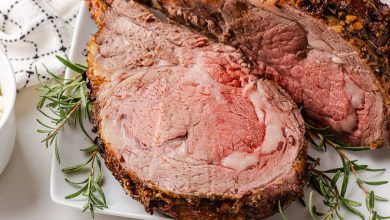White Wheat Flour (Industrial, Bleached, Enriched) – Nutritional Information
White wheat flour is a staple ingredient in many culinary creations, providing the foundation for everything from breads and pastries to sauces and batters. This industrially processed flour undergoes bleaching and is enriched with essential nutrients, ensuring both texture and nutritional content.
Nutritional Breakdown (Per 100g):
| Nutrient | Amount |
|---|---|
| Energy | 363 kcal |
| Protein | 11.5 g |
| Total Fat | 1.45 g |
| Saturated Fat | 0.268 g |
| Carbohydrates | 73.81 g |
| Fiber | 2.4 g |
| Sugar | 1.12 g |
| Calcium | 20 mg |
| Iron | 5.06 mg |
| Magnesium | 30 mg |
| Phosphorus | 112 mg |
| Potassium | 138 mg |
| Sodium | 2 mg |
| Zinc | 0.84 mg |
| Copper | 0.161 mcg |
| Manganese | 0.679 mg |
| Selenium | 27.5 mcg |
| Vitamin C | 0 mg |
| Thiamin (Vitamin B1) | 0.736 mg |
| Riboflavin (Vitamin B2) | 0.445 mg |
| Niacin (Vitamin B3) | 5.953 mg |
| Vitamin B6 | 0.032 mg |
| Folate | 31 mcg |
| Vitamin B12 | 0 mcg |
| Vitamin A | 0 mcg |
| Vitamin E | 0.05 mg |
| Vitamin D2 | 0 mcg |
Allergen Information:
- Contains gluten, which is a common allergen for those with gluten sensitivity or celiac disease.
- May contain traces of soy, depending on manufacturing processes, making it unsuitable for individuals with soy allergies.
- Manufactured in facilities that may process dairy, nuts, and seeds, so cross-contamination is possible.
Dietary Preferences:
- Suitable for vegetarians and vegans, though always check for specific brand ingredients and any added animal-derived additives.
- While this flour is an essential ingredient in many dishes, it is not gluten-free, so individuals with celiac disease or gluten intolerance should avoid it.
- This flour is also not suitable for those following a low-carb or keto diet due to its high carbohydrate content.
Usage Advice:
White wheat flour is highly versatile and serves as the base for a wide variety of recipes. It’s essential for traditional baking such as bread, cakes, muffins, cookies, and pastries. Its fine texture allows for easy incorporation into dough, batter, and sauces, ensuring a smooth consistency.
If you’re looking to add some fiber to your diet or lower your carb intake, consider substituting part of the white flour with whole wheat flour. However, remember that this flour’s high carbohydrate content might make it unsuitable for certain low-carb diets. To achieve the best results in your recipes, it’s recommended to use it in combination with other ingredients like yeast, baking powder, or fats to provide the right texture and flavor.
Conclusion:
White wheat flour, enriched with vitamins and minerals, remains an essential ingredient in the kitchen. Whether you’re preparing homemade bread, pasta, or pastries, this flour offers a balance of nutrients and functionality. However, those with gluten sensitivities should seek out suitable alternatives, while others can enjoy the richness and versatility it provides in their culinary creations.










